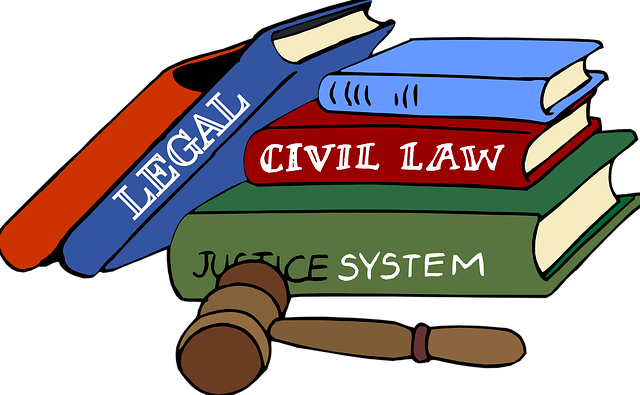Unraveling Temporary Disability in Workplace Accident Claims

Understanding temporary disability benefits is key to navigating a successful workplace accident cla…….
In today’s fast-paced industrial landscape, ensuring worker safety and addressing workplace accidents have become paramount for businesses and governments worldwide. At the heart of this effort lies the concept of a “workplace accident claim,” a process designed to provide compensation and support to employees injured or affected by work-related incidents. This comprehensive article aims to dissect the intricate world of workplace accident claims, exploring its various facets, global impact, economic implications, technological innovations, regulatory frameworks, and future prospects. By delving into these aspects, we will equip readers with a thorough understanding of this critical component of occupational health and safety.
A workplace accident claim refers to the legal process by which an employee or their dependents seek financial redress and support after sustaining injuries or adverse health effects due to a work-related incident. This can encompass a wide range of accidents, from slip-and-falls and machine-related injuries to exposure to hazardous substances. The primary objectives of such claims are:
The concept of workplace accident claims has evolved over centuries, reflecting societal shifts towards worker protection and industrial safety. In the early industrial revolution, workers often faced dangerous conditions without any safety nets. It was only in the late 19th and early 20th centuries that labor movements and legislative reforms began to address these issues. For instance:
Workplace accident claims remain a critical aspect of modern industrial relations for several reasons:
The global impact of workplace accident claims is diverse, shaped by cultural, economic, and legal differences across regions. Some key observations include:
Several trends are shaping the future of workplace accident claims worldwide:
Despite global efforts, regional disparities in claim handling persist:
| Region | Average Claim Processing Time | Compensation Coverage | Major Challenges |
|—|—|—|—|
| North America | 3-6 months | Comprehensive (medical, wage loss) | Complex litigation processes |
| Western Europe | 2-4 months | Extensive (including long-term disability) | Stricter eligibility criteria |
| Asia Pacific | Highly variable | Varies (limited in some countries) | Lack of enforcement mechanism |
| Africa/Latin America | Typically longer (6+ months) | Limited (often only medical coverage) | Inadequate legal frameworks, underfunding |
Workplace accident claims have significant economic ramifications, influencing both employers and the broader economy:
The claims landscape also influences investment decisions and market trends:
Technological advancements have revolutionized workplace accident claims, improving efficiency and accuracy:
The future holds even more promise for technological innovations:
The legal landscape governing workplace accident claims is diverse but crucial for ensuring worker protection:
Effective policies have profound effects on claim handling:
Despite the progress made, workplace accident claims face several challenges:
Addressing these challenges requires a multi-faceted approach:
Context: Sweden is renowned for its robust workplace safety system, which has significantly reduced fatal accidents and occupational diseases.
Strategy: The Swedish model emphasizes proactive workplace safety measures, involving both employers and employees in risk assessment and improvement processes. Key features include:
Outcome: This approach has resulted in a near elimination of fatal work-related accidents, demonstrating the power of proactive safety initiatives.
Focus: Germany’s system provides comprehensive coverage for all workers, regardless of industry or employment status.
Implementations: The German model is funded by contributions from employers and employees, ensuring a sustainable insurance pool. Key aspects include:
Impact: This system has led to improved workplace safety and higher employee morale, showcasing the benefits of a well-designed insurance model.
The future of workplace accident claims is poised for significant developments:
Several sectors are expected to witness growth in workplace accident claims:
To navigate these prospects effectively, employers should:
The complex landscape of workplace accident claims is an integral part of the ongoing pursuit for safer and healthier industrial environments. From historical roots to modern technological advancements, this field has evolved significantly. By understanding its core components, global influences, economic implications, and future trends, we can appreciate the critical role it plays in protecting workers and shaping industries worldwide.
As societies continue to prioritize occupational health and safety, workplace accident claims will remain a dynamic and essential component of industrial relations. Through effective policies, technological innovations, and proactive employer initiatives, the future holds promise for even safer workplaces, where accidents are minimized, and employee well-being is paramount.
Q: How do I know if my workplace accident claim is valid?
A: A valid claim typically involves a work-related injury or illness that was not your fault. It must be documented with medical evidence and reported within the specified timeframe as per local laws.
Q: What if my employer disputes my claim? Can I still receive compensation?
A: In such cases, you can appeal the decision through the designated dispute resolution process outlined in your region’s legislation. Legal representation may be required for a successful appeal.
Q: Are there any restrictions on the types of injuries that qualify for compensation?
A: Legislation varies, but generally, most claims cover accidents leading to physical injuries, illnesses, and even certain types of psychological disorders related to work.
Q: How long does it take to resolve a workplace accident claim?
A: Processing times vary widely globally, ranging from a few weeks to several months. Complex cases may take longer due to extensive investigations and legal procedures.
Q: Can I file a claim if I was partially at fault for the accident?
A: Liability assessments differ by jurisdiction. Some places follow a “contributory negligence” system, where compensation is reduced if you’re partly responsible. Others have more nuanced rules, so local laws should be consulted.

Understanding temporary disability benefits is key to navigating a successful workplace accident cla…….

Understanding your rights and obligations is key when filing a workplace accident claim. You must re…….

Workplace accident claims for equipment-related injuries are a crucial aspect of labor law and indus…….

Independent Medical Exams (IMEs) are essential tools for fairness and accuracy in workplace accident…….

After a rejected workplace accident claim, understanding your rights and gathering robust evidence i…….

When a workplace accident claim is denied, understanding the process, your rights, and gathering sol…….

After a workplace accident, prioritize immediate medical attention while documenting pain levels, di…….

A workplace accident claim is a legal process for workers harmed on the job, seeking compensation fo…….

After a workplace accident, employees should act promptly by reporting the incident and gathering ev…….

Workplace accidents, from minor to severe, may entitle employees to file claims against employers fo…….